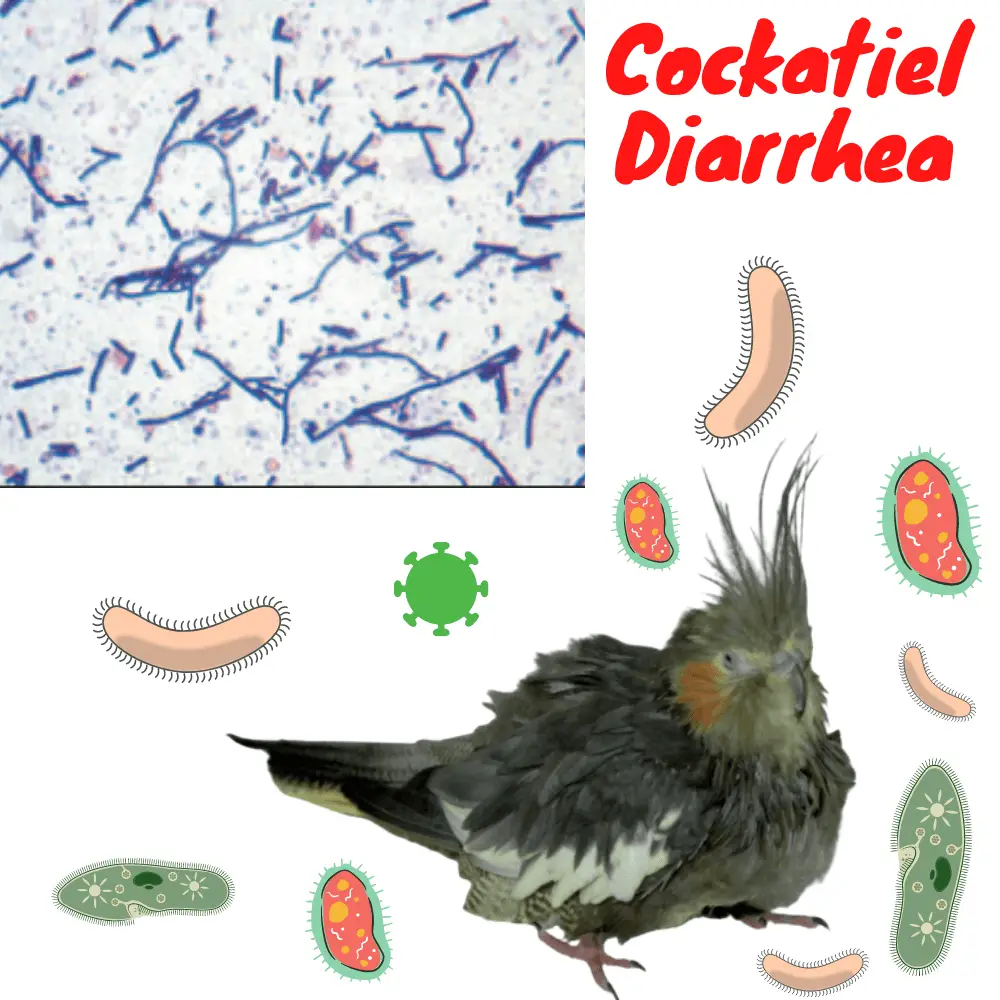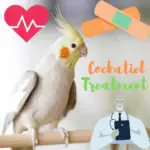
Cockatiel Lesions, injuries, and masses: Parasites in cockatiel: diagnosis, treatment, prevention, Wavy parakeets, like parrots, can contract many diseases through bacteria, viruses, fungi, and parasites. These diseases will be more or less contagious and deadly. Some diseases will be specific to a few species while others will be more devastating and impact any species. Here are the most well-known infectious diseases.
Cockatiel tumors
Like any animal, cockatiels can be sensitive to tumors. A tumor will be benign when it is confined to a specific area of the body. It becomes malignant, and therefore cancerous when it multiplies in the body via metastases.
Note in the cockatiel the tumor called xanthoma: an invasive skin tumor most of the time related to trauma (injury, fall …). A diet too rich in lipids seems to be a predisposing factor to xanthomas. If the diagnosis is quite simple, this tumor however requires a rapid excision (ablation) because it tends to spread.
Lipomas are yellow or brown masses, of soft consistency and usually located on the sternum, the cranial end of the breast, the thighs, or the neck. They are a sign of obesity: it is necessary to make the animal lose weight as soon as possible. Rarely cancerous, they are then called liposarcomas.
Finally, the uropygial gland, located on the rump, allows the animal to waterproof its plumage. Some cockatiels seem to be devoid of it, while in others it can be affected by cancer.
Feathery cyst in cockatiel
Commonly associated with canaries, the feathery cyst can be found in parakeets. Genetic origins are possible, especially when the selection relates to the fineness of the pen, but poor conditions of detention are also involved including insufficient luminosity. The feather then becomes soft and does not pierce, causing a cyst. If the smallest and youngest cysts are easily cared for by a simple incision, then not treating the problem or the multiplication of cysts leads to greater complications.
The rupture of the aerial bag of the cockatiel
This is an air pocket on the side or both sides of the neck of the cockatiel. The rupture of the airbag is the consequence of injury or trauma. If it is painless, this effect still causes dyspnea in the animal.
Cockatiel Lesions Cockatiel injuries
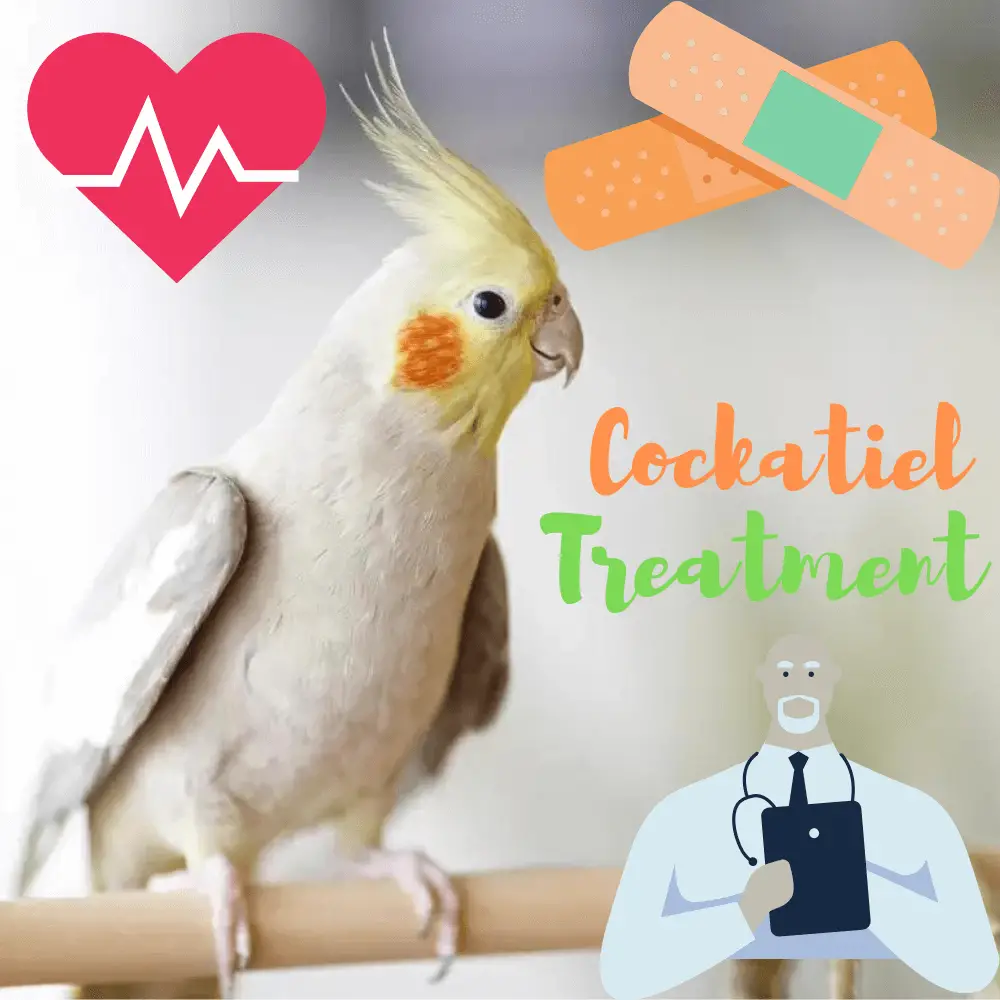
Constriction in cockatiel
Whether it is a paw or a finger, constriction consists of accidental withers. Generally, parakeets undergo this effect by tangling their paws in a thread or any other fiber. The withered limb quickly swells and swells. It is important to react quickly and release the stuck limb. Care must be paid to the rings of animals: they must be properly adjusted and of appropriate size so as not to cause unintentional constriction.
Prolapse in calopsittitis
Prolapse is defined by a reversion of the cloaca or descent of organs. It can affect the uterus or gastrointestinal organs. This pathology can occur after egg-laying pain in the female. Males can also be affected when they tend to masturbate too often. A genetic predisposition to this effect would seem possible.
Cockatiel Lesions Cockatiel injuries
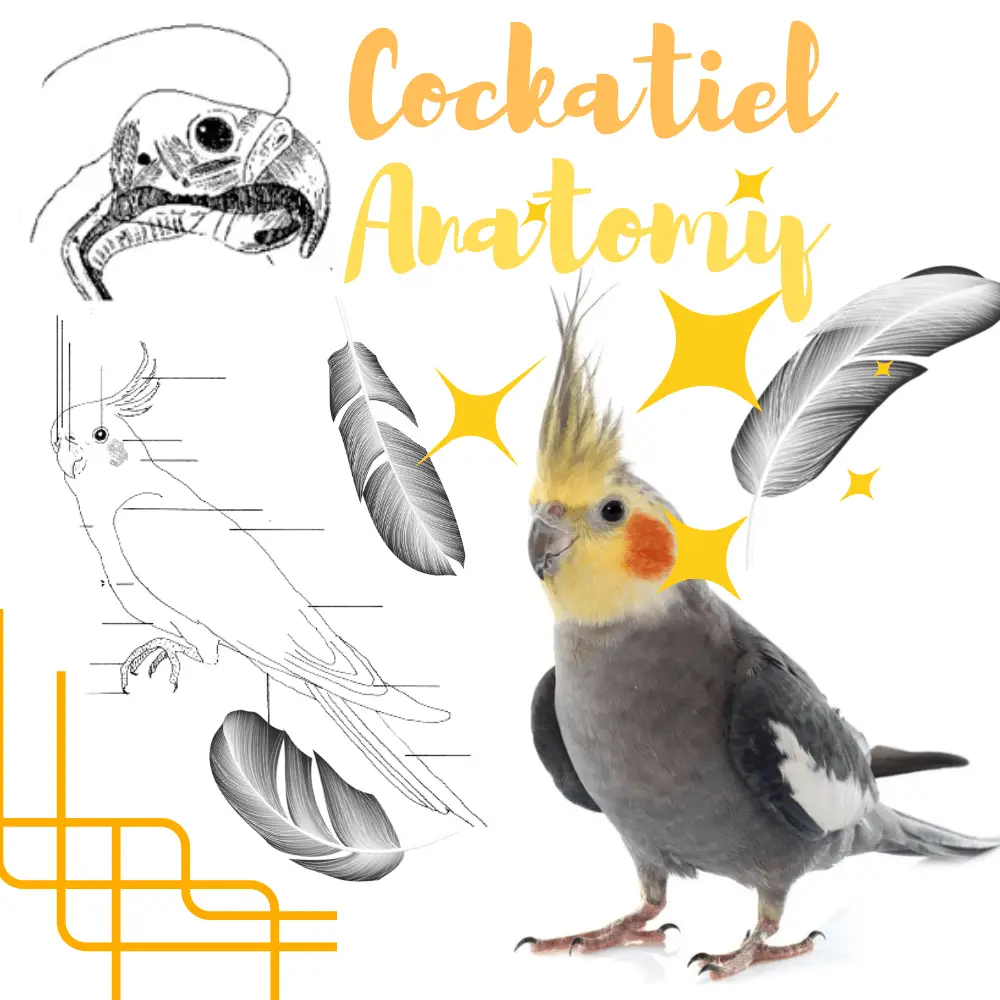
Pododermatitis in cockatiel
Pododermatitis is an ulceration of the underside of the legs (the pedal integument) of the cockatiel It can be related to the overweight of the animal, but also to perches and unsuitable equipment or even to insufficient hygiene. The lesions are then the entry point for bacteria infecting the damaged areas. Vitamin A deficiency appears to be a contributing factor to pododermatitis. The risk of recurrence is significant.
The wart of the cockatiel
Papillomas are commonly called “warts”. They are localized mainly on the commissure of the beak, wings, or uropygial gland. These skin cell proliferations are safe for the animal, but their removal is possible. However, recurrence is common.
Injuries of the cockatiel
Frostbite for idle birds living outdoors, but also accidental burns. Injuries due to a wire, self-mutilation, another animal species kept in the home, or even between cockatiels themselves… There are many pitfalls for a cockatiel. The bird can be lacerated, or bruised (presence of a greenish hematoma)…
Care depends on the condition of the animal as well as the severity of the injury. Cleaning a wound with an antiseptic is the first of the initiatives. It may be possible to call a veterinarian in case of hemorrhage, foreign bodies in the wound, or even infection.
Burns and frostbite may require antibiotics and corticosteroids.
Cockatiel Lesions Cockatiel injuries
Psittacosis or chlamydia
Psittacosis (or chlamydia) is the best-known and most feared parrot disease because it is a contagious disease from animals to humans, which degenerates into zoonosis. chlamydophila psittaci is The causative agent of this big disease. it can significantly infect parrots like humans, and cause pneumonia (rare).
The symptoms are:
- Diarrhea
- Conjunctivitis
- Breathing difficulties,
- Nervous symptoms,
- Anorexia
- Vomiting.
The infection is often mute and the parrot is thus called a “healthy carrier”.
The diagnosis is established after searching in the droppings, thanks to the specific tests in the lab. A titration of the antibodies present in the blood can also be done. The treatment will consist of administering the molecule “tetracycline” through food or water over a period of one month to 45 days.
Salmonellosis and colibacillosis
Parrots can contract salmonellosis. This disease can progress to its acute form (diarrhea, anorexia, depression, and death), or chronic (arthritis, liver damage, and nervous system disorders).
Colibacillosis is also a bacterial disease, with more varied symptoms. It is the agent “Escherichia Coli” that is responsible for the variety of symptoms because it can affect different organs. The bacteria can contaminate the egg directly in the ovary or after laying, leading to the death of the chick. Symptoms will be:
- Gastroenteritis (vomiting, diarrhea, weight loss, anorexia)
- Nervous disorders (tremors, torticollis, lack of coordination of movements)
- Reproductive disorders (sterility, egg laying small, soft shell)
The diagnosis of this disease as that of “staphylococci, streptococcal and pseudo-tuberculosis” will be the isolation of the germ where it will be (cloaca, nostrils, droppings, organs) through a bacteriological examination. The antibiogram will determine the most suitable antibiotic for treatment.
Pseudo-tuberculosis
The agent of this disease is the bacterium “Yersinia pseudotuberculosis“. The sick are bristling, the evolution is rapid. The epidemic often affects only one species at a time. They die within 3-5 days. If there is an incubation, it has not been discernible.
This disease can be confirmed without any possible doubt by autopsy of deceased birds. The spleen increases in volume significantly. The liver and spleen have many small, fairly hard white nodules. The liver may be black, and the bird experiences lung congestion. Samples can be taken so that the bacterial strain can be determined with certainty and the effective treatment is known.
Keep the bird in a hospital cage, without contact with others because the disease is contagious. Here are drugs that treat this disease:
- For 10 days, Chloramphenicol: Mycolicin. This can be purchased in a veterinary office. Dosage: 12 drops per 60ml of water, or 5ml per liter of water. The largest packaging is 50ml.
- Baytril 10% in oral solution 1ml / liter of water (substance Enrofloxacin of the family of fluoroquinoles), broad spectrum: Bayer Pharma Laboratory animal health division.
Cockatiel Lesions Cockatiel injuries
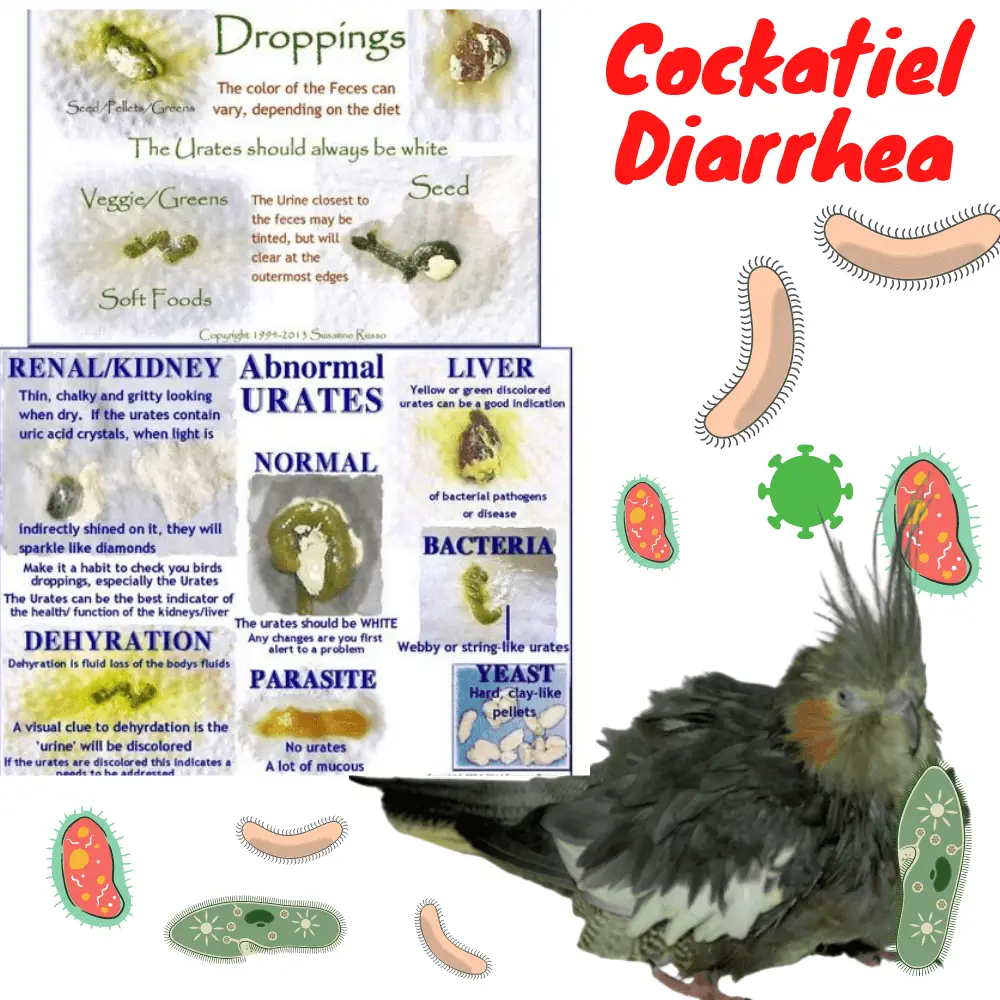
Proventriculite
This disease often strikes wavy parakeets, inseparable, cockatiels, and collared parakeets. The microorganism responsible for the disease is the “megabacterium” located in the proventricle and severely impairing gastric function. The appetite is not impacted but the weight loss of the bird grows until its death (droppings with undigested seeds). The treatment will be based on “amphotericin B” orally over a minimum of 10 days.
Proventricle dilation syndrome or PPD, or PDDS
It is a viral disease that causes progressive paralysis of the proventricle and causes nerve damage. Infected parrots regurgitate and do not digest seeds that end up in droppings. There are treatments for this disease, apart from the administration of a rich and liquid diet, and care for secondary infections (induced by PPD).
Pacheco disease
Wavy parakeets and parrots can be victims of many viral diseases, including Pacheco’s disease, one of the most feared. It is caused by a herpes virus, causing significant liver damage causing them to die within a few days. This disease is related to imports and can cause healthy carriers in parrots (often). Contaminated birds have the following symptoms:
- General malaise
- Characteristic yellowish diarrhea
- OR rapid death without symptoms
The diagnosis is based on quantified and qualified memories of imports (rate of patients, high mortality, and liver damage observed after autopsy). Histological examination of liver tissue (and necrosis) will be revealed. There is no effective treatment. Acyclovir is a molecule that can reduce contagion between parrots but is ineffective on subjects already affected.
Psittacidae beak and feather disease: PBFD
tags. Psittacidae beak and feather disease (PBFD) is caused by a “circovirus” virus, which causes severe plumage alterations in infected psittacines. Feathers grow more or with difficulty (the pinnae no longer come out of the follicle or are narrow), and there may be hemorrhages at the base of the plumage. The bird thus seems plucked. The beak and claws can grow abnormally and become more fragile. PBFD thus causes a global drop in the immune system of psittacines and makes them susceptible to any infection. The course of the disease is chronic and mainly affects cockatoos. The acute form is violent and affects smaller species such as lovebirds. Symptoms are severe hepatitis and death.
Diagnosis is easy, typical plumage lesions must be observed, and the diagnosis is confirmed with a molecular probe test (PCR) on a simple blood sample. Parrots that test positive but do not show symptoms can develop immunity, and become negative in future tests. It is recommended to do them every 90 to 120 days. There is currently no treatment.
Polyomavirus
It is a viral disease that particularly affects young EAM parrots before weaning. The symptoms are:
- Gosier never completely clear
- General allowance
- Diarrhea
- Anorexia
- Subcutaneous hemorrhage
Death will occur 2 to 3 days after the first symptoms are observed. Polyomavirus can be transmitted through droppings, nasal secretions, and feather dust, and these can contaminate water and food. Parents who are often “healthy carriers” of the virus will pass it on to the little ones.
In wavy parakeets, the disease (polyomavirus) presents itself differently. In addition to having the previous symptoms, it can cause an alteration of the plumage similar to PBFD disease. These two diseases are the basis of the pathology commonly called “French molt”. There is no effective treatment, but there is a vaccine that is difficult to access. The diagnosis is established through the PCR test on a blood sample, or with an organ fragment. Positive but asymptomatic subjects should be isolated and excluded from reproduction until they are negative after the next tests, within 90 to 120 days.
Smallpox
Smallpox is caused by a pox virus, and impacts parrots through insect bites and mainly mosquitoes. Symptoms will be:
- Conjunctivitis
- Formation of a diphtheria membrane in the first respiratory tract
- Breathing difficulties
- Secondary bacterial infections
Treatment of the disease involves reactivity in administering a broad-spectrum antibiotic to fight secondary infections. But this will have no effect against the virus itself.
Mycosis
Mycoses are fungicidal infections caused by different fungi. They are opportunistic infectious agents, which benefit from present malnutrition, or prolonged antibiotic treatment.
The most serious mycosis is aspergillosis, which has the following symptoms:
- Breathing difficulties
- Coughing or whistling
- Opening and closing the spout
- Gradual dieback
The diagnosis of this disease will be based on several examinations, blood tests, endoscopies, radiography, and culture. The treatment will be an antimycotic molecule like “fluconazole, ketoconazole” etc. It will be administered by parenteral voice or aerosol. There will be a need for antibiotic treatment to cure concomitant bacterial infections.
Verminous
Verminous is due because of worms. The most common will be tapeworm, ascarid and capillary infections. Death can result from intestinal obstruction. Diagnosis will be the determination of the nature of the parasite. The bird will be treated with a suitable antihelminthic. The symptoms are:
- Weight loss while maintaining appetite
- Vomit
- Diarrhea
Parasitoses
Parasitoses are external parasitic infections (to the body).
The best known will be red lice (visible by spreading the feathers), acariasis or scabies of the beak and legs (symptoms: thick beige-whitish crusts crumbling around the eyes and wax and beak. The parakeet scratches), etc. The treatment will be external, based on select mine or ivermectin (known name: stronghold kitten, ivomec). The treatment will be a single drop of stronghold kitten or even better Ivomec, between the two wings, lifting the feathers, behind the neck.
Family Accidentally Squashed a Cockatiel
https://www.youtube.com/watch?v=61ZIS2XWeyo SOURCE:Bondi Vet
Related Articles:



